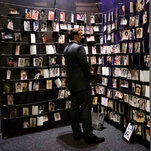Climate Action and Extreme Weather Events: A Season of Reckoning
As autumn unfolds across the globe, the stark reality of climate change continues to dominate headlines with an urgency that can no longer be ignored. This season has witnessed an alarming escalation in extreme weather events, from devastating wildfires that have consumed vast swaths of forest to powerful hurricanes that have battered coastal communities and unprecedented floods that have displaced thousands. These events serve as sobering reminders that climate change is not a distant threat but a present crisis demanding immediate action.
The Gathering Storm: Extreme Weather on the Rise
The past few months have painted a troubling picture of our planet’s changing climate patterns. The Mediterranean region, traditionally known for its mild autumn weather, has been struck by unprecedented storms that have brought torrential rains and destructive winds to areas unprepared for such intensity. These storms have caused significant infrastructure damage, disrupted transportation networks, and forced communities to confront the reality that their climate is shifting in ways they never anticipated.
Meanwhile, North America has experienced its own share of climate anomalies, with early snowfall arriving in regions where such weather was historically rare for this time of year. This dramatic shift in seasonal patterns has caught agricultural communities off guard, threatening crop yields and forcing farmers to adapt quickly to new realities. The juxtaposition of extreme heat waves followed by sudden cold snaps has created a volatile weather pattern that challenges traditional farming practices and emergency preparedness protocols.
Wildfires continue to rage across multiple continents, with fire seasons extending far beyond their historical boundaries. These blazes have not only destroyed millions of acres of forest and grassland but have also released enormous quantities of stored carbon into the atmosphere, creating a dangerous feedback loop that accelerates climate change. The smoke from these fires has traveled thousands of miles, affecting air quality in major metropolitan areas and highlighting the interconnected nature of our global climate system.
Renewed Commitments and International Cooperation
Against this backdrop of environmental crisis, the international community has convened for several major climate conferences throughout the autumn season. These gatherings have brought together world leaders, environmental scientists, and policy makers to reassess global commitments to reducing carbon emissions and accelerating the transition to sustainable energy systems.
The conferences have yielded renewed pledges from numerous countries to strengthen their climate action plans, with particular emphasis on achieving more ambitious emissions reduction targets. Several nations have announced accelerated timelines for phasing out fossil fuels, while others have committed to substantial increases in funding for renewable energy infrastructure. These commitments represent a recognition that previous efforts, while important, have been insufficient to meet the scale of the challenge.
However, these renewed commitments have also sparked intense debates over policy effectiveness and economic impact. Critics argue that many of the proposed measures lack concrete implementation strategies and adequate funding mechanisms. Economic concerns about the cost of rapid decarbonization have led to tensions between environmental necessity and economic stability, with developing nations particularly concerned about the financial burden of transitioning to clean energy while maintaining economic growth.
The Renewable Energy Revolution
Central to many of the climate action plans emerging from recent conferences is an unprecedented focus on renewable energy expansion. New reports from leading energy organizations highlight urgent calls for accelerated adoption of solar and wind power technologies across Europe, Asia, and North America. These reports suggest that the renewable energy sector must grow at a rate far exceeding current projections to meet global climate targets.
Europe has positioned itself as a leader in this renewable energy push, with several countries announcing ambitious plans to dramatically increase their solar and wind capacity over the next decade. The European Union’s updated energy strategy emphasizes not only environmental benefits but also energy security, particularly in light of recent geopolitical tensions that have highlighted the risks of fossil fuel dependence.
Asian markets, led by technological innovations in solar panel efficiency and wind turbine design, are experiencing rapid growth in renewable energy installations. Countries across the region are investing heavily in grid modernization and energy storage technologies to support the integration of variable renewable sources. These investments are creating new economic opportunities while addressing climate concerns, demonstrating that environmental action and economic development can be mutually reinforcing.
North America is witnessing a similar transformation, with both government policies and private sector initiatives driving substantial investments in renewable energy infrastructure. The region’s vast wind and solar resources are being harnessed at an unprecedented scale, supported by improving technology costs and growing public support for clean energy transitions.
Building Climate Resilience
The extreme weather events of this autumn have underscored the critical importance of climate resilience and disaster preparedness. Communities worldwide are recognizing that even as efforts to reduce greenhouse gas emissions accelerate, the climate impacts already set in motion will require robust adaptation strategies.
Climate resilience initiatives are taking multiple forms, from infrastructure improvements designed to withstand extreme weather events to early warning systems that can help communities prepare for impending disasters. Cities are investing in flood defenses, heat-resistant building materials, and green infrastructure that can provide natural protection against climate impacts while also offering environmental benefits.
The agricultural sector is developing new approaches to cope with changing precipitation patterns and temperature extremes. Drought-resistant crop varieties, improved irrigation systems, and diversified farming practices are being implemented to maintain food security in the face of climate uncertainty. These adaptations require significant investment and policy support, highlighting the need for comprehensive climate action that addresses both mitigation and adaptation simultaneously.
Economic Implications and Social Justice
The intersection of climate action and economic policy continues to generate significant debate. While renewable energy costs have declined dramatically, the transition to a low-carbon economy requires substantial upfront investments that can strain government budgets and private sector resources. The challenge lies in designing policies that accelerate climate action while ensuring economic stability and social equity.
Concerns about the distributional impacts of climate policies have brought social justice considerations to the forefront of climate discussions. Communities that have historically been most affected by environmental degradation are often the least equipped to benefit from new economic opportunities in the clean energy sector. Addressing these disparities requires targeted policies that ensure the benefits of climate action are shared equitably across all segments of society.
The concept of a “just transition” has gained prominence in recent climate conferences, emphasizing the need to support workers and communities dependent on fossil fuel industries as the economy shifts toward cleaner alternatives. This approach recognizes that climate action must be socially sustainable to be politically viable and environmentally effective.
The Path Forward
As this eventful autumn draws to a close, the path forward on climate action appears both more urgent and more complex than ever before. The extreme weather events that have marked this season serve as powerful reminders of the stakes involved, while the renewed international commitments offer hope for meaningful progress.
The success of current climate initiatives will depend largely on the ability of governments, businesses, and civil society to translate ambitious commitments into concrete actions. This requires not only technological innovation and financial investment but also the political will to implement policies that may involve short-term costs for long-term benefits.
The renewable energy revolution offers a promising foundation for reducing greenhouse gas emissions, but its success will require continued investment in research and development, grid infrastructure, and energy storage technologies. Equally important is the need to address the social and economic dimensions of climate change, ensuring that the transition to a sustainable economy is inclusive and equitable.
The extreme weather events of this autumn have demonstrated that climate change is not a future problem but a present reality requiring immediate attention. The question is no longer whether action is needed, but whether the actions being taken are sufficient in scale and speed to meet the magnitude of the challenge. The coming months will be critical in determining whether the renewed commitments and ambitious plans announced this season can be translated into the transformative changes our planet urgently needs.
As communities worldwide continue to grapple with the immediate impacts of extreme weather while planning for long-term sustainability, one thing remains clear: the time for incremental change has passed. The climate crisis demands bold, comprehensive action that addresses both the causes and consequences of our changing climate. The events of this autumn have provided both the urgency and the opportunity to rise to this challenge.











